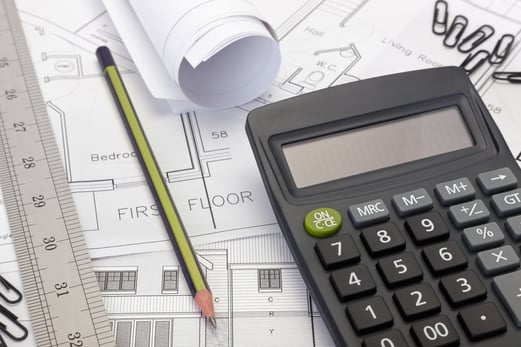The benefits of integrating BIM into your construction strategy

The AEC (Architecture, Engineering, and Construction) industry would, today, still be lagging behind had it been persistently using the time-tested methodologies. BIM (Building Information Modeling) integration now plays an integral role in the success of construction strategies the world over. The benefits of this integration are plenty and enormous. For this reason, many countries such as the US, UK, China, and India are mandating BIM modeling in their major construction projects.
Construction projects are fast paced and a single day’s delay could mean huge cost overruns. Usually, we account for a certain percentage of delays because projects often take 20% longer than the estimated time. Also, cost estimations are often inaccurate with old methodologies of manual quantity take-offs. BIM has revolutionized the way construction projects are carried out. As a result, we witness accurate time and cost estimations, among others.

Institutions of higher learning are also paying attention to the perks of BIM technology, which then leads to the addition of the curricula in project management, operations, civil engineering, facilities management, and architecture courses. Consequently, companies are reviewing their recruitment requirements for graduates. They are looking forward to including BIM technicians in their teams. All thanks to realized great benefits of BIM integration in construction strategies.
When many people think of BIM they refer to 3D modeling. While 3D modeling is synonymous with BIM’s virtual model it does not single-handedly give a finite definition of what this technology entails. There is 4D, 5D, and 6D dimensions. 4D is about time schedules, 5D about cost estimations, and 6D about operations and facility management.

The benefits of BIM are virtually countless in today’s construction projects. Human errors that were ubiquitous in construction projects are dealt with. One can think of BIM as the digital construction manager. However, it does more than a typical construction manager can perform. For instance, it helps facility owners manage their properties since it associates critical information with building components in a digital prototype.
How do you benefit by integrating BIM in a construction strategy?
We have already highlighted some benefits of BIM in construction projects. It integrated various aspects of a construction project to make it successful. Amongst others, the technology improves collaborative efforts, communication, and validate the viability of the construction design before construction commences. This saves lots of money that would be otherwise lost due to numerous change orders.
BIM gives inter-disciplinary teams a visual model that they can work with. There are no more inconvenient 2D or CAD drawings. Thanks to a seamless and effective collaboration among teams regardless of their geographic locations. We light some critical benefits of BIM below:
1). Accurate cost and time estimation
Time and cost estimations are critical components of every construction project. All stakeholders are interested to know the overall budget and the time it will take to wrap up the project. Manual determinations of these factors have proven to be tedious and ineffective. BIM helps with accurate estimations of cost and time from the design to the planning phases. It eliminates human error. Construction projects are now completed efficiently and on-time because of expedited and accurate cost and time estimations.

2). Effective communication among teams
Oftentimes, stakeholders in a construction are broad ranging teams some of which may be located in different countries. To collaborate during the construction, they would hold multiple meetings or make countless calls as a means of communication. Today, BIM provides an effective communication in a common data environment.
All teams are able to communicate effectively and seamlessly through BIM digital model. They are able to achieve common goals in a shortest period of time because BIM unifies them and smoothen collaboration. If any team, for example, effects changes to the models, other teams can see that and immediately react to the changes. As a result, teams remain up to date with every phase of the project.
3). Zero on-site reworks or redesigns
Traditionally, designs would go through multiple changes throughout the construction duration. Other teams may be commanded to redesign or rework other parts of the project. BIM provides a digital model upon which teams can effect reworks and redesigns before the construction is actually done. Thanks to the digital model that represents the physical features of the structure.
Teams can visualize the finished structure in a common data environment before contractors lay a foundation. Because of this, BIM saves time by eliminating reworks and redesigns. Instead of imagining the building, teams are visualizing the facility live in a digital prototype.
4). Accurate procurement of materials
A construction manager is entrusted with the responsibility to ensure that materials are up to date at the right budget. To achieve that, the manager would conduct quantity take-offs manually using 2D drawings. Imagine how time consuming will that be in a complex hospital building, for example. You would need plenty of managers to manually compile the list of materials and their costs.
BIM makes the process a cinch. It provides accurate and expedited quantity take-offs. Also, it helps managers procure the right quantity of raw materials that could last the entire duration of the project.
5). Facility management and project handover
After completion, the teams have to hand over the facility to the owner. Normally and traditionally, there would be plenty of papers handed to the owner. BIM provides a digitally centralized information that can be handed to the owner. It makes facility management easy because critical information is included in the model.
Issues such as energy efficiency and routine maintenance are achieved with ease using BIM for facility management.
Without BIM, the construction industry wouldn’t be where it is now. Companies like New York Engineers are playing a pivotal role in the integration and implementation of BIM in all construction projects. The benefits of this technology are irresistible hence many economic powers are mandating the use of BIM in their projects. Today, BIM contributes about 6% to the global economy through the AEC industry.

Anuj Srivastava
Anuj Srivastava is a principal partner at NY Engineers. He is known for his MEP franchise market knowledge. Anuj is currently leading a team of 100+ MEP/FP engineers and has successfully led over 1500 franchise projects in the US.
Join 15,000+ Fellow Architects and Contractors
Get expert engineering tips straight to your inbox. Subscribe to the NY Engineers Blog below.
